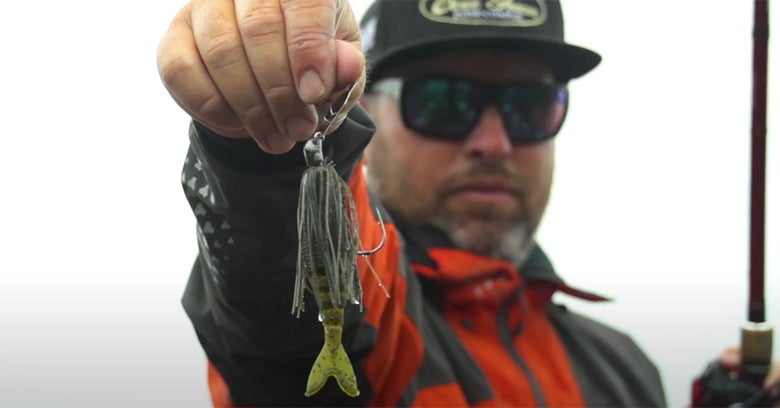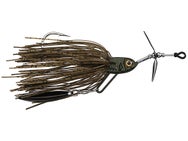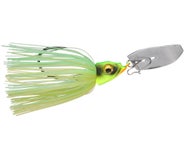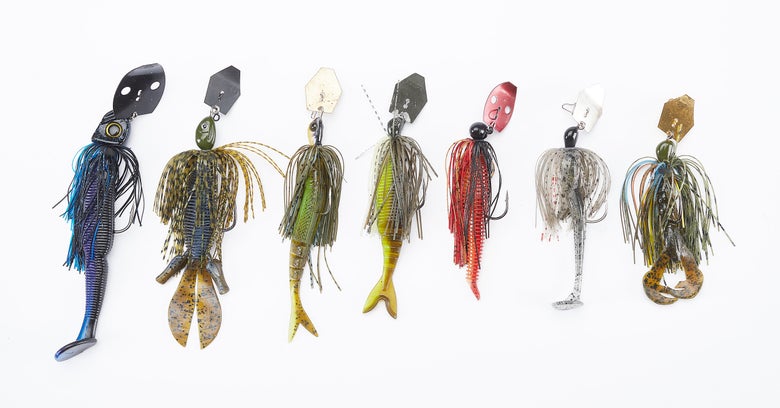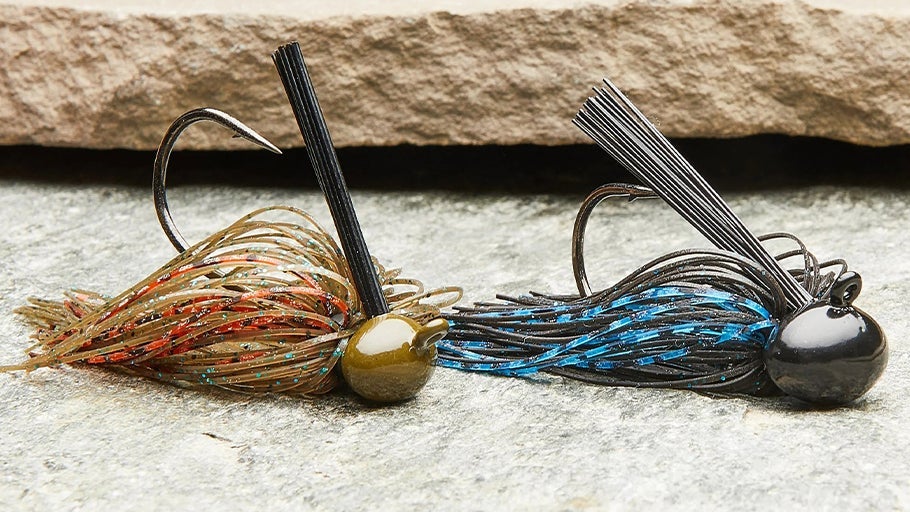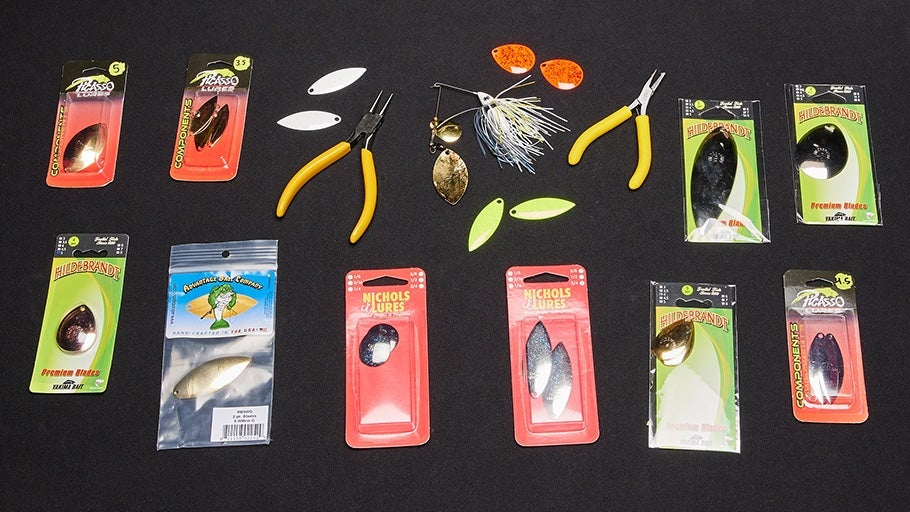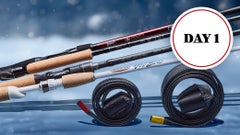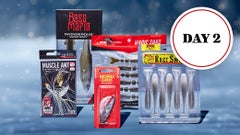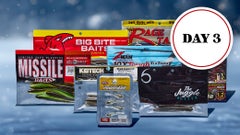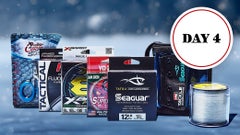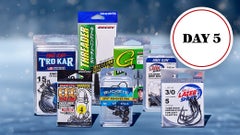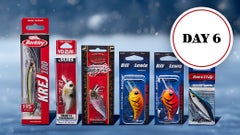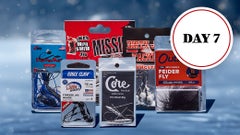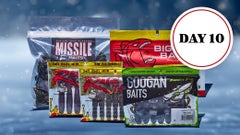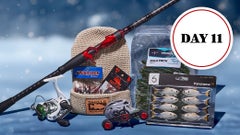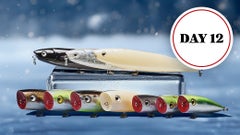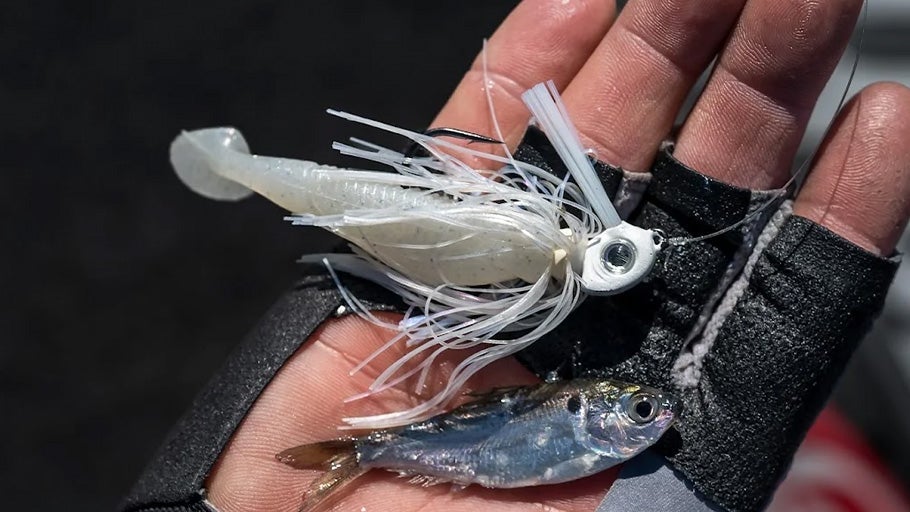
Bladed Jigs Gear Guide
A lure that has dominated bass fishing in recent years, the bladed jig has accounted for countless tournament victories, including helping pro angler and bladed-jig visionary Brett Hite bring home over $500,000 in tournament winnings throughout his career. The bladed jig is so effective because it offers a blend of some of the best reaction baits ever created: the tight vibration of a lipless crankbait, the deflective qualities of squarebill, and the ability to be fished in areas where treble-hooked lures would hang up constantly.
Whether you are fishing for money or just beating the bank, the bladed jig is incredibly easy to fish. A great option for a beginner or a seasoned pro, it helps anglers of all skill levels catch more fish around standing and submerged cover. The focus of this guide is to provide in-depth gear recommendations, examine modifications and rigging options, and explore the best retrieve techniques for fishing the bladed jig.
Bladed Jig Rods
When fishing bladed jigs, anglers usually prefer a longer medium-heavy to heavy-powered rod in the 7’2” – 7’11” range with a more parabolic action. The added length helps with longer casts, taking up line for quality hooksets, and snapping the blade clear of vegetation. Fiberglass rods (often referred to as "glass" rods) with a moderate action are generally favored as they help keep the blank loaded when fighting a fish and prevent situations where you could be pulling the jig out of the fish’s mouth. Some anglers do prefer a graphite rod (also with a more parabolic bend) over glass rods, as graphite rods typically offer more sensitivity and a little extra power when fishing around excessive amounts of cover or using a heavily weighted bladed jig.
Bladed Jig Reels
Casting reels with a gear ratio in the 6:1 – 7:1 range are ideal for fishing bladed jigs, as they give the angler the ability to slow down or speed up their retrieve to match the mood of the fish. Gear ratios of 8:1 or faster are great for covering water, but be careful using higher speed reels, as they can also tend to overpower the jig and prevent the blade from vibrating properly. A 100- to 200-size casting reel provides a palm-perfect fit that should offer plenty of line capacity while remaining compact and easy to fish. Bladed jigs often call for higher-pound test lines and longer casts to cover water more efficiently, so keep these factors in mind when selecting a reel.
Bladed Jig Line
During most of the year, fluorocarbon is going to be your best option for bladed jigs. Flurocarbon's translucency, minimal stretch, and solid abrasion resistance ensure that bass won't see your line as it comes through the water column while also providing the strength necessary to tame big fish and heavy cover. Line size is always dictated by where you intend on fishing and the size of your bladed jig, but fluorocarbon lines in the 12- to 20-lb range are ideal, with 15-lb being the sweet spot.
If the water is super clear or you are using a lightweight bladed jig, feel free to go down in line size, but if there is some stain in the water, you’ll want to use line that’s as heavy as you can get away with. Some anglers will even switch to 40- to 50-lb braided line when fishing around heavy grass to help snap their bladed jig out of vegetation and clear the blade. A closed eye snap is often preferred when fishing around heavy cover with braided line, as the snap is less likely to open up on a strong hookset.
Modifications & Rigging
Bladed jig trailers give anglers limitless opportunities to customize their presentation. Soft plastic jerkbaits, paddle-tail swimbaits, and curly tailed grubs are great for imitating baitfish or bluegills, while crawfish or creature baits provide a bulkier profile and move more water for stained-water or low-light conditions. The potential rigging methods are only restricted by your imagination, however, soft-plastic trailers with less action are typically better suited for bladed jigs, as they are more natural and don’t impede or disrupt the action of the blade.
Don’t be afraid to try different brands, head shapes, or blade styles, because each bladed jig produces a different action. While it may not always seem like it, a slightly different profile or vibration could pay big dividends when the fish are highly pressured. Also, consider trimming the jig's skirt so it doesn’t interfere with your trailer and allows it to produce maximum action. When faced with extremely clear water conditions, some anglers will also completely remove the skirt for an even more natural profile. Finally, consider keeping a dip-and-dye or color marker on deck so you can accent your plastics and make your trailers pop to help generate more bites.
Retrieve Technique
An irregular retrieve is often the key to provoking a reaction strike, whether you are imparting action with the rod tip or simply varying your retrieve speed. Just like many productive moving baits, it’s all about doing something out of the norm to entice a stubborn fish into biting, so try giving your reel a speedy half-turn or twitch of the rod tip to flare the skirt and add some erratic action. A small departure from a straight retrieve might be all a finicky fish needs to commit to biting.
The bladed jig is one of the best tools for catching bass around shallow grass patches, whether you’re fishing along the outside edges or burning it over submerged vegetation. Oftentimes, anglers fishing around grass will rely on slightly different gear to get the job done, including braided line, a slightly heavier rod, and a bladed jig with a closed eye snap. If you are not feeling grass or cover during your retrieve, slow down until you come into contact with it or try pausing completely from time to time to let the bait fall to the bottom.
When you feel the blade stop vibrating, you either have a bite or need to clear the blade of vegetation with a sharp pop of your rod tip. For this reason, side-sweeping hooksets are most commonly used, and your goal is to continue reeling when you have a bite to load the rod tip and feel the weight of the fish. If the fish are positioned deep in the water column, the bite may involve hopping the bait much like a traditional jig, in which case a conventional upward jig hook set would still apply.
Colors
Bladed jigs are excellent at imitating all kinds of forage, including bluegill, panfish, shad, and crawfish, so it’s best to stick to green pumpkin tones and translucent shad patterns when getting started. There is no need to complicate your color selection for bladed jigs, as many anglers would attest that if you can only choose one color, green pumpkin will provide the versatility to be thrown just about anywhere with success. When the sun is high, use colors with flake to deliver added flash and attraction. During cloudy conditions, muted colors will put off a better silhouette for the fish to zero in on. If the water is dirty, try using bolder colors like white/chartreuse, black-blue, solid white, and red craw combinations.
Notorious for catching both numbers and size, the bladed jig can be fished effectively in depths from 1–30 feet, through all types of cover, and catch all species of bass, making it a great search bait when you are trying to cover water. Easy to fish effectively, the bladed jig provides excellent utility for both beginners and advanced anglers.
